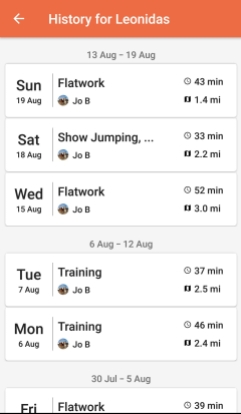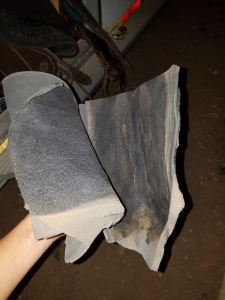By Joanna Byrne

I am questioned often about what color I think a mare will produce when crossed with a particular stallion. Most of the time it is pretty straightforward, but I usually have the most difficulty explaining base colors. As much as I enjoy doing coat color calculations, I thought it would be interesting to put together some basics.
Red Factor
Equine base color is either Red or Black. Red is recessive, meaning it takes only one black to cover it up. While this sounds pretty simple, your base coat can have a significant effect on modifier and dilute colors. I will designate Red with a lower case ‘e’ and Black with and uppercase ‘E’.

Each horse gets one gene from each parent, giving them a pair that decides what their base color is. So, ‘ee’ would be red and ‘Ee’ or ‘EE’ would be black. UC Davis’ VGL website lists a rare ‘ea’ gene also but does not state if it affects the shade of red exhibited.
A Red parent will always give a Red gene, while a Black parent with heterozygosity for Black (one E and one e) would produce the ‘e’ gene 50% of the time. A parent with homozygosity for Black, or ‘EE’, will always produce a Black foal.
Color Presentation

We can all agree that black horses are always black, though they do sun fade in the summer. But Red horses are a different story because red color can vary even between family members. Some have flaxen manes, some show sooty shades, some have honey colored highlights, some are copper or mahogany, but they are all Red genetically. Eventually, perhaps the changes of tone in the red hair can be better explained with genetic markers.

Red Factor is heavily affected by the Agouti gene, which creates Bay on Black base coat horses. I will address Agouti in the next article, but I have linked to a journal article from 2016 that suggests that Red Factor and Agouti may have an effect on equine behavior. If you are a fan of heavy scientific jargon, check it out here: https://academic.oup.com/jhered/article/107/3/214/2622964
Has anyone had any crazy colored red horses?
There is a 2018 filly by Gotta Be Free that is a sooty red and has varied shading in her coat, including a black spot with white hair in it. Really interested to see what she looks like when she sheds again!

References
Jacobs, L. N., Staiger, E. A., Albright , J. D., & Brooks, S. A. (2016, May). The MC1R and ASIP Coat Color Loci May Impact Behavior in the Horse. Journal of Heredity, 107(3), 214–219. Retrieved from https://doi.org/10.1093/jhered/esw007
Red Factor. (n.d.). Retrieved from UC Davis Veterinary Genetics Laboratory: https://www.vgl.ucdavis.edu/services/horse/redfactor.php

 Rider profile is pretty straightforward, with name, gender, and weight. A profile picture can be added, and that pretty well sums it up. Nicely if you go into settings, you can link it to your Google Fit account, which is handy because I can tell you that Google Fit usually thinks I’m riding a bicycle when I ride my horse.
Rider profile is pretty straightforward, with name, gender, and weight. A profile picture can be added, and that pretty well sums it up. Nicely if you go into settings, you can link it to your Google Fit account, which is handy because I can tell you that Google Fit usually thinks I’m riding a bicycle when I ride my horse.
 Logging Rides
Logging Rides








